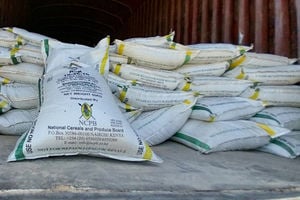Pastoralists bank on insect to clear invasive cactus from grasslands

Members of Naibung’a Upper Community Conservancy in Laikipia inspect cochineal bugs being bred in a greenhouse.
What you need to know:
- About 80 per cent of the landscape covering 50,000 acres is degraded due to the invasive cactus.
- However, six years ago, researchers introduced a biological control method that is now lauded for helping destroy tens of acres of the cactus.
For years, the pastoral communities in Laikipia North have struggled to eliminate cactus (Opuntia stricta) bushes that have colonised their grasslands, posing a threat to livestock. The cactus has been blamed for massive livestock deaths and degradation of the larger Laikipia North landscape that is home to the Mukogondo Maasai.
Residents have been removing the cactus manually or using it for biogas production , but the plant continues to spread. Naibung’a Upper Community Conservancy Chairman Peter Kilesi says about 80 per cent of the landscape covering 50,000 acres is degraded due to the invasive cactus. However, six years ago, researchers backed by the Northern Rangeland Trust (NRT) introduced a biological control method that is now lauded for helping destroy tens of acres of the cactus.
Residents are now using the cochineal insect, which specifically feeds on the cactus by sucking on its juices until it dies off. The use of the cochineal bug was successfully tested in South Africa before the insect was introduced in Kenya four years ago. “After we were introduced to the cochineal, there was positive progress in destroying the invasive cactus. However, the insect is not as effective during the rains because it is washed away,” Mr Kilesi says.
The cochineal bug is multiplied in 18 greenhouses operated by women groups across the Naibung’a Conservancy.
In the last one year, the women have managed to use the cochineal to clear the cactus in more than 50 acres of grassland.
NRT Mountain region coordinator Dorcas Lolngojine says the use of cochineal insects has helped reclaim previously affected land. “We have supported the setting up of 18 greenhouses where the cochineal is bred for three weeks. Women groups do the work of spreading the insects on cactus plants across the landscape. We have managed to reduce cactus flowering, which is vital to eliminating the plant.” She notes that reducing production of the sweet prickly fruits means elephants and baboons won’t continue spreading the plant.
According to Ms Jane Meshami, women took up the work of destroying the cactus as they are the worst hit due to the death of goats that are a source of milk and income.“Without goats, we cannot feed or educate our children. Since the invasion of the Opuntia stricta, the Maasai community in Laikipia North has been impoverished. We expect to restore our livelihoods with help from the insects” Ms Meshami says. To restore the areas where the cochineal has successfully eradicated the cactus, Naibunga Conservancy is spearheading grass reseeding of reclaimed areas.
Ms Ruth Rana, a resident of Ilpolei, hopes that one day they will get rid of the cactus and restore their livestock numbers. Introduced in the area in the 1950s as a fencing plant, Opuntia stricta seeds were then spread across the region by elephants and goats that feed on its juicy fruits.
The cactus suppresses growth of grass and other shrubs, leaving the land bare and prone to erosion.
“Before the cactus spread across the area, each family had around 100 goats. The thorns coupled with a degraded landscape have cleared all our animals. Due to lack of forage, animals go for the cactus fruits,” the conservancy chairman explains.
A 2022 annual report by Naibung’a Upper Community conservancy indicates that there were 1948 cattle and 17, 132 goats and sheep in the area, a far cry from about 20,000 cattle and 40,000 goats some years back.





